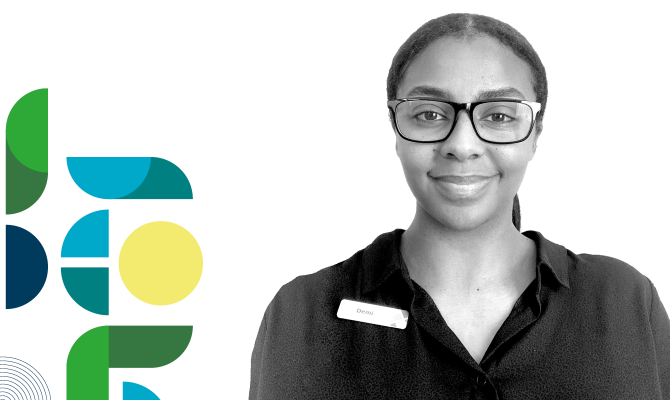Get to know an Occupational Therapist – Demi Adem
28 Oct 2021

What is Occupational Therapy?
Occupational therapy helps people get back to the activities they want or need to do daily following an injury or illness. These activities can range from anything, whether playing your favourite sport, brushing your teeth, cooking and everything in between. Consider us as problem-solvers who help you get back to the activities that are important to you. Contrary to popular belief, occupational therapy is not just a profession that assists people to return to work but all the other daily activities as well.
Why did you become an occupational therapist (OT)?
I pursued occupational therapy because I recognise “doing” as an integral part of human existence, and I really wanted to be a part of this process. This decision has paid off as I get to celebrate the achievements with my clients, which is greatly rewarding.
I also wanted a role where I could work with people and diversify my work setting - both of which are possible under occupational therapy.
What is the main focus of your role as an occupational therapist?
My main focus as an occupational therapist is purely in pain management services, which I am really passionate about.
Our Habit Health pain management service helps clients who are experiencing chronic or persistent pain. We offer strategies to help them return to the activities they want and need to do in their daily lives. The tools used to reconcile this includes pacing (spacing out activities throughout the day to avoid pain aggravation), adapting tasks or environment, implementing modified equipment, relaxation strategies, sleep hygiene and many other strategies.
What do you love most about your job?
I genuinely enjoy being a part of the rehabilitation journey for clients and seeing the joy they have when they achieve their goal.
I recently had a client who is now able to return to her passion of photography and another who was able to get back to gardening – these are the kinds of stories that make it all worthwhile.
Furthermore, working in pain management greatly interests me as I see how physical and mental health comes together.
What do you do for joy outside of work?
My source of joy includes reading, spending time with my family, playing tennis (when there aren’t lockdowns!) and watching funny cat videos.
What are your favourite books at the moment?
I am currently going through a phase of reading books that discuss how to enhance health and well-being. I am currently reading:
- “Habits of a happy brain: retrain your brain to boost your serotonin, dopamine, oxytocin & endorphin levels” by Loretta Graxiano Breuning
- “The potential principle: a proven system for closing the gap between how good you are and how good you could be” by Mark Sanborn
- “Ouch! Why pain hurts and why it doesn’t have to” By Margee Kerr and Linda Rodriguez McRobbie
What is your favourite quote?
“If you are not careful, the newspapers will have you hating the people that are being oppressed and loving the people that are doing the oppressing” by Malcolm X
It reminds me to keep an open mind, listen to all sides of the story and not be too quick to believe.
What advice would you give to someone who is thinking about becoming an occupational therapist?
I would say it is a greatly rewarding and diverse area in the health sector. It may be helpful to talk to someone who is currently an OT or spend time learning what it’s all about before making this decision.
If you are the kind of person who enjoys working with people and connecting them back to their occupations, then this could definitely be a space for you.
If you would like to learn more about what occupational therapy is, visit our Occupational Therapy page.